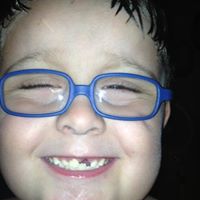Ronald J Rhodes
age ~65
from Louisville, CO
- Also known as:
-
- Ronald James Rhodes
- Ronald L Rhodes
- Ron Rhodes
Ronald Rhodes Phones & Addresses
- Louisville, CO
- 520 Date St, Boulder City, NV 89005 • (702)2937735
- Metuchen, NJ
- Highland Home, AL
- Carbondale, PA
- San Diego, CA
- Lynnwood, WA
- Louisville, CO
- Long Beach, NY
License Records
Ronald L Rhodes
Address:
Metuchen, NJ
License #:
36BI00673800 - Expired
Category:
Master Plumbers
Issued Date:
Jan 11, 1982
Expiration Date:
Jun 30, 2009
Type:
Master Plumber
Ronald L Rhodes
Address:
Metuchen, NJ
License #:
36BI00673800 - Expired
Category:
Master Plumbers
Issued Date:
Jan 11, 1982
Expiration Date:
Jun 30, 2009
Type:
Master Plumber
Ronald L Rhodes
Address:
Metuchen, NJ
License #:
36BI00673800 - Expired
Category:
Master Plumbers
Issued Date:
Jan 11, 1982
Expiration Date:
Jun 30, 2009
Type:
Master Plumber
Ronald L Rhodes
Address:
Metuchen, NJ
License #:
36BI00673800 - Expired
Category:
Master Plumbers
Issued Date:
Jan 11, 1982
Expiration Date:
Jun 30, 2009
Type:
Master Plumber
Ronald L Rhodes
Address:
Metuchen, NJ
License #:
36BI00673800 - Expired
Category:
Master Plumbers
Issued Date:
Jan 11, 1982
Expiration Date:
Jun 30, 2009
Type:
Master Plumber
Us Patents
-
System And Method For Analyzing Conductor Formation Processes
view source -
US Patent:56594836, Aug 19, 1997
-
Filed:Jul 12, 1996
-
Appl. No.:8/678805
-
Inventors:Ronald J. Rhodes - South Plainfield NJ
Timothy A. Estes - Albuquerque NM -
Assignee:National Center for Manufacturing Sciences - Ann Arbor MI
-
International Classification:G01R 2704
-
US Classification:364481
-
Abstract:A centralized computer system in communication with a measurement system including a multi-point probe is programmed to analyze a plurality of conductor formations on a particular substrate, store information relating to an electrical characteristic of each conductor formation analyzed, and generate a report including information as to the variance in the electrical characteristic as a function of substrate position. To step through all of the conductor formations on a particular substrate, the computer may either be programmed to move a chuck holding the substrate under test relative to the points of the probe, or the system may include switching means disposed in an electrical path between the points of the probe and the resistance measurement system, enabling the computer to step through all of the conductor formations on a particular substrate by instructing the switching means to select points associated with only a single conductor formation for connection to the resistance measurement system. The system preferably further includes an imaging system interfaced to the chuck and computer to identify a visual target on the substrate and align the substrate relative to the points of the probe to ensure proper contact therebetween.
-
Treating Multilayer Printed Wiring Boards
view source -
US Patent:42773210, Jul 7, 1981
-
Filed:Jan 17, 1980
-
Appl. No.:6/113117
-
Inventors:Charles J. Bartlett - Madison NJ
Ronald J. Rhodes - South Plainfield NJ
Ray D. Rust - Berkeley Heights NJ -
Assignee:Bell Telephone Laboratories, Incorporated - Murray Hill NJ
-
International Classification:C23C 1500
-
US Classification:204192E
-
Abstract:Multilayer printed wiring boards are conventionally laminated using epoxy adhesives. When the boards are drilled, a residual smear often remains within the drilled holes. This smear prevents proper through plating of the holes and the layers are left without some of the intended interconnections. In the past, the residual smear was removed by wet etching. A technique is described using plasma etching with the conductive surface layers of the drilled boards as the electrodes to generate the plasma. The plasma forms directly within the holes and effectively removes the smear. A dielectric material in contact or close proximity to the perimeter of each board provides uniformity of treatment over the panels.
-
Treating Multilayer Printed Wiring Boards
view source -
US Patent:42305535, Oct 28, 1980
-
Filed:Apr 23, 1979
-
Appl. No.:6/032339
-
Inventors:Charles J. Bartlett - Madison NJ
Ronald J. Rhodes - South Plainfield NJ
Ray D. Rust - Berkeley Heights NJ -
Assignee:Bell Telephone Laboratories, Incorporated - Murray Hill NJ
-
International Classification:C23C 1500
-
US Classification:204192E
-
Abstract:Multilayer printed wiring boards are conventionally laminated using epoxy adhesives. When the boards are drilled, a residual smear often remains within the drilled holes. This smear prevents proper through plating of the holes and the layers are left without some of the intended interconnections. In the past, the residual smear was removed by wet etching. A technique is described using plasma etching with the conductive surface layers of the drilled boards as the electrodes to generate the plasma. The plasma forms directly within the holes and effectively removes the smear. A dielectric material in contact or close proximity to the perimeter of each board provides uniformity of treatment over the panels.
Name / Title
Company / Classification
Phones & Addresses
Principal
Ronald A Rhodes
Business Services at Non-Commercial Site
Business Services at Non-Commercial Site
3722 Sweetwater Rd, Highland Home, AL 36041
Flickr

Ronald Rhodes
view source
Ronald Rhodes
view source
Ronald Rhodes
view source
Ronald Rhodes
view source
Ronald Scott Rhodes
view source
Ronald Rhodes
view source
Ronald Rhodes
view source
Ronald William Rhodes
view sourceClassmates

Ronald Rhodes
view sourceSchools:
Marion High School Marion LA 1982-1986
Community:
Deborah Gilliam, Cheryl Traylor

Ronald Rhodes
view sourceSchools:
Albert Gallatin High School Point Marion PA 1983-1987
Community:
Diane Miller

Ronald Rhodes
view sourceSchools:
Seiling High School Seiling OK 1985-1989
Community:
Michelle Nelson, Michael Garman, Brenda Butler, Sherry Lynn, Robin Shuck, John Wayne, Tracy Rutz, Edwin Hendrix, James Johnson, Derrick Perkins, John Smith

Ronald Rhodes
view sourceSchools:
Mary E. Fogarty Elementary School Providence RI 1965-1969, Roger Williams Middle School Providence RI 1969-1973
Community:
William Cook, Richard Briar, Cheryl Cosmo, John Lapolla

Ronald Rhodes
view sourceSchools:
University of Western Ontario London Morocco 1943-1947
Community:
Dave Fleming, Ted Nixon, Kathy Wycott

Ronald W Rhodes
view sourceSchools:
Caesar Rodney High School Camden Wyoming DE 1997-2001
Community:
Lisa Hawkins

Ronald Rhodes
view sourceSchools:
Grand Avenue Middle School Bellmore NY 1960-1963
Community:
Joann Rumph, Bonnie Newitt, Carol Mathie

Ronald Rhodes Jr | Ballst...
view sourceYoutube
Googleplus

Ronald Rhodes
Work:
Not anymore
Education:
BTHS - B POLY
Tagline:
Just an OK guy.....Loves life..

Ronald Rhodes

Ronald Rhodes

Ronald Rhodes

Ronald Rhodes

Ronald Rhodes

Ronald Rhodes

Ronald Rhodes
Myspace
Get Report for Ronald J Rhodes from Louisville, CO, age ~65

















